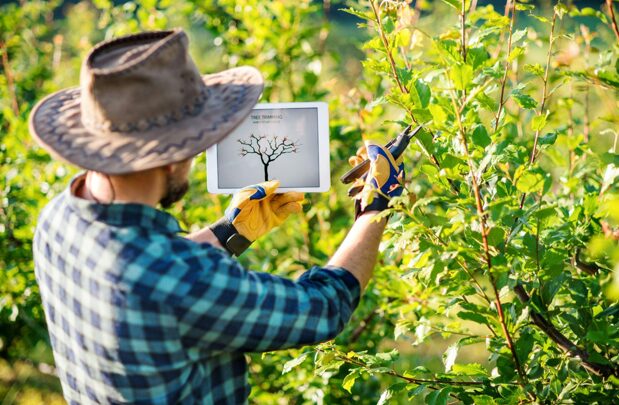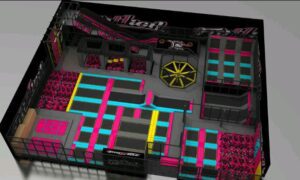In today’s fast-paced world, technology is reshaping every industry, and agriculture is no exception. As we face challenges like climate change and a growing population, innovative solutions are essential for sustainable farming. AI and automation are at the forefront of this agricultural revolution, enhancing efficiency and productivity while reducing resource consumption.
By harnessing the power of data, farmers can make informed decisions that lead to better crop yields and healthier ecosystems. From precision farming techniques to autonomous machinery, technology is not just a tool—it’s a game-changer. Join us as we explore how these advancements are transforming the landscape of modern agriculture and paving the way for a more sustainable future.
How AI and Automation Are Transforming Farming
Technology plays a crucial part in modern agriculture, significantly transforming farming practices. AI and automation tackle challenges like climate change and food scarcity by enabling precision farming techniques. As we adopt these technologies, we notice a shift toward data-driven decision-making among farmers.
- AI in Agriculture
AI analyzes vast amounts of data, allowing farmers to optimize resources. For instance, predictive analytics identify pest outbreaks before they spread, leading to timely interventions. Autonomous drones monitor crop health and yield, delivering real-time insights.
- Automation’s Impact
Automation streamlines processes by using machinery designed for specific agricultural tasks. Robots handle planting, harvesting, and even weeding, reducing labor costs and increasing efficiency. With the RaintreeNursery model, automated greenhouses maintain optimal conditions while minimizing resource waste.
- Precision Farming
Precision farming utilizes satellite imagery and IoT devices to track soil health and moisture levels. Farmers can apply fertilizers and pesticides more accurately, reducing overuse and promoting ecological balance. Integrating these tools fosters sustainable agricultural practices.
- Data-Driven Strategies
We create value through data analytics that informs crop selection and planting schedules based on climate predictions. This proactive approach enhances crop yields, ensuring food security as global populations continue to rise.
- Sustainability Focus
Entire farming ecosystems benefit from integrated technology. By optimizing resource usage, we minimize environmental impacts. These innovations not only support productivity but also contribute to healthier land and ecosystems.
AI and automation are indispensable in reshaping the agricultural landscape, enhancing efficiency, sustainability, and productivity.
Overview of Modern Agricultural Technology
Modern agricultural technology encompasses various innovations that reshape farming practices. These advancements, driven largely by AI and automation, help address pressing global challenges in food production and sustainability.
Historical Context
Agricultural technology has evolved significantly from traditional farming methods to the advanced systems we see today. Early innovations included the plow and irrigation techniques, which laid the groundwork for increased efficiency. The 20th century introduced machinery like tractors and the chemical application of fertilizers and pesticides. As climate change and population pressures heightened in the 21st century, the necessity for more sustainable and efficient farming became clear. Technologies like precision farming emerged, utilizing data-driven approaches to optimize resource allocation.
Current Trends
Current trends in agricultural technology focus on automation, AI integration, and data utilization. Autonomous machinery, like drones and robotic harvesters, improves efficiency by performing repetitive tasks with precision. AI algorithms analyze large datasets for predictions and resource management, assisting farmers in making informed decisions regarding crop health and pest management. Additionally, Internet of Things (IoT) devices collect real-time data, enabling adaptive responses to environmental conditions. The integration of these technologies contributes to reducing resource waste and enhancing productivity, propelling the agricultural sector toward a sustainable future. The rise of advanced platforms illustrates the transformation of farming into a data-centric industry, positioning it at the forefront of innovation.
Artificial Intelligence in Farming
AI significantly enhances modern farming practices through precision agriculture and data analysis. We utilize machine learning algorithms and advanced analytics to boost efficiency and sustainability in our agricultural methods.
Precision Agriculture
Precision agriculture involves leveraging AI to analyze data from various sources, such as satellite imagery and IoT sensors. We apply these insights to optimize resource allocation, targeting water, fertilizers, and pesticides precisely where needed. This targeted approach minimizes waste and reduces environmental impact while maximizing crop yields. By utilizing autonomous machinery, we can monitor land conditions and adapt to climate variations efficiently, which is essential for sustainable farming.
Data Analysis and Decision Making
AI-driven data analysis transforms decision-making in agriculture. We access real-time data on crop health, weather patterns, and soil conditions, facilitating informed choices that enhance productivity. Predictive analytics allows us to anticipate pest infestations and adverse weather conditions, enabling proactive management strategies. By incorporating data from various agricultural databases we ensure optimal planting schedules and crop selection, which is crucial for meeting food security challenges.
Automation in Agricultural Practices
Automation revolutionizes agricultural practices, increasing efficiency and sustainability. By incorporating advanced robotics, machinery, and drones, we enhance productivity and resource management in farming.
Robotics and Machinery
Robotic systems and specialized machinery automate vital tasks, such as planting and harvesting. These technologies minimize labor costs and reduce human error. For example, autonomous tractors equipped with GPS technology allow for precise field navigation, optimizing planting patterns. Our reliance on such innovations boosts yield and efficiently utilizes resources, paving the way for more sustainable farming practices.
Drones in Crop Monitoring
Drones play a crucial role in real-time crop health monitoring. Equipped with advanced sensors, drones collect high-resolution images and analyze crop conditions. This data enables us to identify issues like pest infestations or nutrient deficiencies early on. Utilizing drone technology supports targeted interventions, which ultimately leads to better yields and conservation of resources. By incorporating drones into our agricultural operations, we foster healthier ecosystems and contribute to a sustainable future in farming.
Benefits and Challenges
Technology in agriculture presents both significant benefits and notable challenges. We recognize that advancements in AI and automation fundamentally reshape farming practices, enhancing productivity while presenting new hurdles. For more insights on this topic, check out the Food and Agriculture Organization.
Enhancing Efficiency and Yields
Enhanced efficiency significantly boosts crop yields through optimized resource allocation. AI-driven precision agriculture allows for targeted application of fertilizers and water, minimizing waste. Autonomous machinery, like specialized planting and harvesting equipment, increases operational speed and accuracy, which leads to higher productivity. In utilizing drone technology for crop monitoring and analysis, farmers make informed decisions, which ultimately benefits both yield and ecosystem health.
Addressing Employment Concerns
While automation improves efficiency, it raises concerns regarding job displacement within the agricultural sector. As machines perform tasks traditionally done by workers, many fear loss of employment opportunities. We acknowledge the necessity for adaptive strategies that retrain the workforce for emerging roles in tech-driven agriculture. Transitioning to these roles ensures that workers remain integral to farming, even in an automated landscape. Striking a balance between technological advancement and workforce sustainability remains crucial to foster an inclusive future for agricultural employment.




































